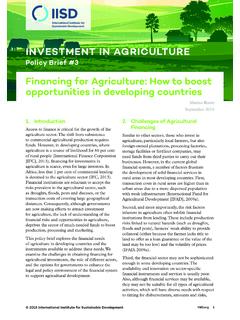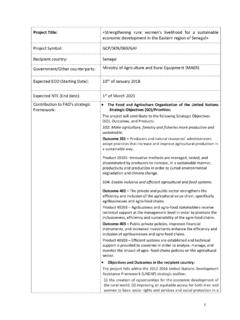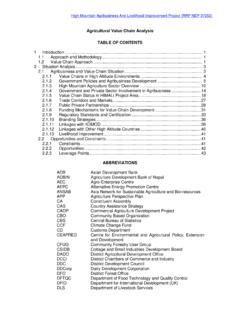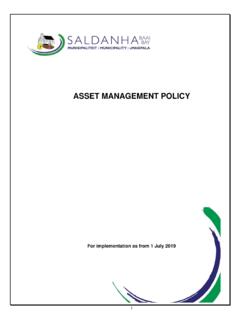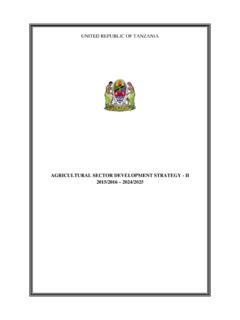Transcription of MONITORING AND EVALUATION PLAN
1 MONITORING AND EVALUATION PLAN January 2008 6, Tukuluho Road, Private Bag 307X Lusaka, Longacres Tel: 01 251371 Fax: 01 255502 TABLE of CONTENTS Section Page Number Introduction Page 1 Section One: MONITORING and EVALUATION Basics Page 2 MONITORING and EVALUATION Concepts Page 2 Common Terms of MONITORING and EVALUATION Page 2 Principles of a MONITORING and EVALUATION System Page 3 PROFIT s Overarching Causal Model Page 3 PROFIT s Required Indicators Page 4 Section Two: PROFIT Knowledge Management Section Page 5 PROFIT s Industry Pathway System Page 5 Component 1: Intervention Process Page 5 Component 2: Industry Specific Pathway Observations Page 7 Component 3: Learning Loop Page 7 Component 4: Knowledge Capture/Data Quality Page 10 Section Three.
2 Conclusion Page 13 Annexes Annex 1 Required Indicators and Definitions Page 14 Annex 2 Detailed Industry Pathway Observations Page 18 Annex 3 Tracking Form Page 31 Annex 4 Twice Yearly Household Survey Page 33 Annex 5 Executive Summary Impact Assessment Baseline Page 70 Annex 6 -- Field Staff Management Assessment Page 84 PROFIT MONITORING and EVALUATION Plan 1 OVERVIEW Introduction PROFIT is a 5 year program that uses production finance and improved technology as the means to achieve USAID s broader objective of Increased Sector Competitiveness in Agriculture and Natural Resources (SO). PROFIT responsibility in achieving USAID s SO is to increase industry growth while assuring meaningful poverty reduction at the household level.
3 To achieve this growth with poverty reduction goal, PROFIT uses a value chain approach that is driven by two components. The first component is a value chain analytical framework and the second component is market facilitation. The framework is based on two foundational principles. The first is that by targeting high potential industries that can compete nationally, regionally, and/or internationally and include large numbers of MSEs, broad-based economic growth can be achieved. The second is that to achieve industry growth you need to look at the broader market system in which an industry operates. So while PROFIT focuses on results at the industry level as being paramount and through which longer term benefits will flow to the enterprises and people participating in that industry, its framework for analyzing an industry is much broader than the core functional levels of a value chain .
4 Market facilitation is defined by an action or agent that stimulates the market to develop and grow, but does not become part of it. Market facilitation, while simple conceptually, is very difficult in practice as the aim is to catalyze ownership of a process of constant upgrading among the actors in the value chain . The economic incentives and cultural norms that drive behavior and the constantly changing market dynamics make the environment fluid, often resulting in conflicting economic and social incentives. It is the job of the market facilitator to in the face of these conflicting incentives, foster new and shifting relationships, on-going innovation, and shifting benefit flows such that the actors in the value chain behave in a way that in the collective makes the industry more competitive.
5 As a result, implementing a program using this two pronged approach presents a range of challenges in collecting, analyzing, and using information required to achieve objectives. Essentially, this approach requires a complete re-think of the MONITORING and EVALUATION process moving from an almost stove piped reporting structure to an integrated management process. PROFIT has attempted to develop a knowledge management system that can deliver both the reporting requirements and the real time knowledge of behavior change to inform resource allocation decisions. The MONITORING and EVALUATION plan is broken into two sections. The first section provides an overview of MONITORING and EVALUATION basics including PROFIT s overarching causal model.
6 The next section covers PROFIT knowledge management system including details on how PROFIT integrates the MONITORING and EVALUATION basics and its overarching causal model into its management processes. The plan also provides a number of detailed annexes. PROFIT MONITORING and EVALUATION Plan 2 SECTION ONE: MONITORING AND EVLAUTON BASICS MONITORING and EVALUATION Concepts MONITORING is a continuous function that aims to provide PROFIT staff and other players with early indications as to whether or not there is progress towards achievement of programme objectives. MONITORING allows timely decision making. Successes can be consolidated and mistakes can be corrected.
7 It is a dynamic process. Reporting is the systematic and timely provision of essential information used as a basis for decision-making at appropriate management levels. It is an integral part of the MONITORING function. EVALUATION is a time-bound exercise that assesses systematically and objectively the relevance, performance and success of ongoing and completed programmes at selected stages of the programmes. It uses information arising from MONITORING and reporting, but may also involve data collection that serves to verify and complete such information. Common Terms of MONITORING and EVALUATION MONITORING and EVALUATION system uses the following common terms: Inputs: resources required to achieve outputs, including money, equipment and human resources.
8 Outputs: tangible results of the input cattle treated, farmers trained, agents established. These will be standard. Comparing the inputs to the outputs indicate the efficiency and effectiveness of PROFIT. Outcomes: how the outputs have contributed to an expected change in the situation which was to be addressed by the project. The outcomes also indicate the effectiveness of the PROFIT in achieving its overall objective. Objectives: contribute to the overall PROFIT goal and allows measurement of the success of the programme. Impact: is the long term result of the outcome. The impact includes the overall social, economic, and other developmental effects that the outcomes of the programme have had the community.
9 Indicators: measure the achievements of the outputs, outcomes and objectives. They are measurable, accurate, verifiable, specific, time bound, simple, obtainable and easy to understand. PROFIT MONITORING and EVALUATION Plan 3 Direct Beneficiaries: people who benefit directly from the services provided by the PROFIT investment; Principles of a MONITORING and EVALUATION System All MONITORING and EVALUATION system should follow the following principles: Meets the needs of all the stakeholders the farmers, the service providers, lead firms, PROFIT staff, sub-grantees, USAID; Measures the impact of PROFIT strategies on the livelihoods of those involved; Identify what needs to be done, how, where, when and by whom; Identify what works and what doesn t work; Sustainable continues after end of PROFIT.
10 Participatory and involving; Informs all stakeholders and fits with their systems. Be simple, be useful and be used. PROFIT s Overarching Causal Model All private sector development (PSD) programs are based on a causal model that purports to show how program activities lead to intended program impacts. The causal model may be explicit, or it may be implied in program design (an explicit causal model is preferred), but in either case, it consists of a set of theoretical relationships (or logical framework) that link program activities to program impacts. Or, stated in less technical terms, a causal model is akin to a roadmap showing how the PSD program gets from Point A (program activities) to Point Z (program impact).

